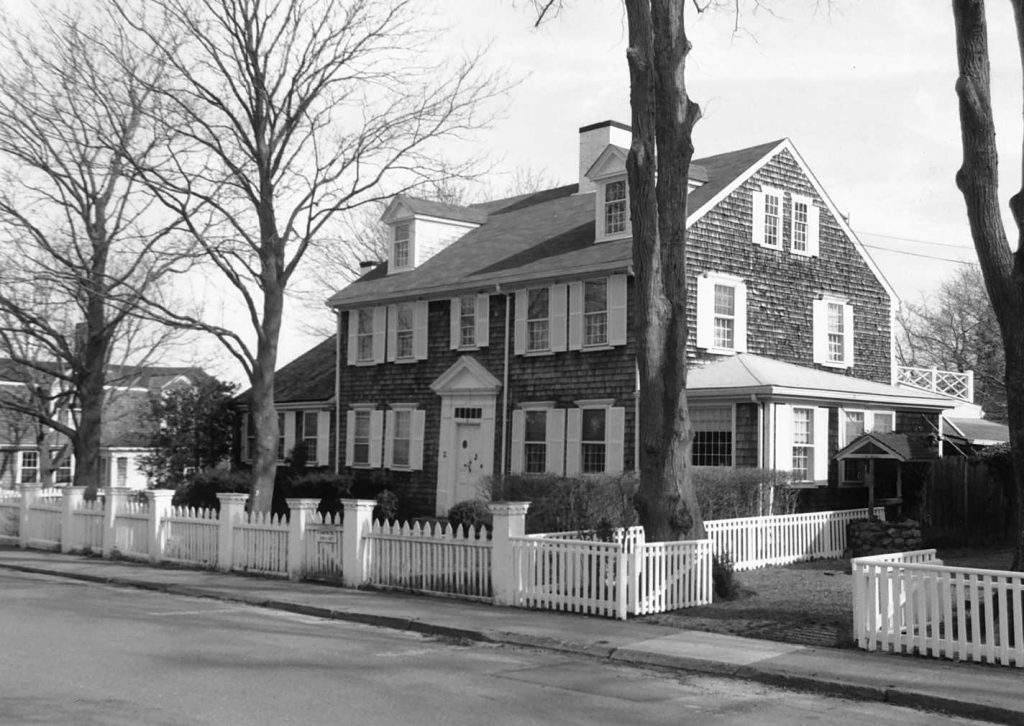In 1998, the Sippican Historical Society commissioned an architectural survey of Marion’s historic homes and buildings. The survey was funded one-half by the Sippican Historical Society and one-half by the Massachusetts Historical Commission. Due to the limits of funding, not all of the historic buildings were surveyed, but over 100 were catalogued and photographed. The results of the survey are in digital form on the Massachusetts Historical Commission’s website and in four binders in the Sippican Historical Society’s office (and at the Marion Town Clerk’s office).
Marion (Old Rochester) is one of the oldest towns in the United States, and the Sippican Historical Society maintains an extensive collection of documentation on its historic buildings. The Sippican Historical Society will preview one building a week so that the residents of Marion can understand more about its unique historical architecture.
This installment features 2 Main Street. Of all the area’s thoroughfares, the densely built-up Main Street has the most picturesquely antique appearance. Main Street west of School Street was set out in 1829. The late Georgian residence at 2 Main Street is known as the “Two Captains’ House” for its owners, Capt. Elisha E. Luce and Capt. Noble E. Bates. Captain Luce moved into this house shortly after his marriage to Jane Hiller, daughter of Timothy Hiller. (The latter Hiller grew up in a house at the corner of South and Water Streets that was later enlarged to become the Bay View House and the Sippican Hotel.) Luce’s best-known ship was the Persia, which made numerous profitable trade missions to the Far East. This house was also the birthplace of the Universalist Church in Marion. In the early 1830s, Universalists met in Captain Bates’ part of the house. Bates owned Bates Wharf (later Union Wharf) at the foot of Main Street.
